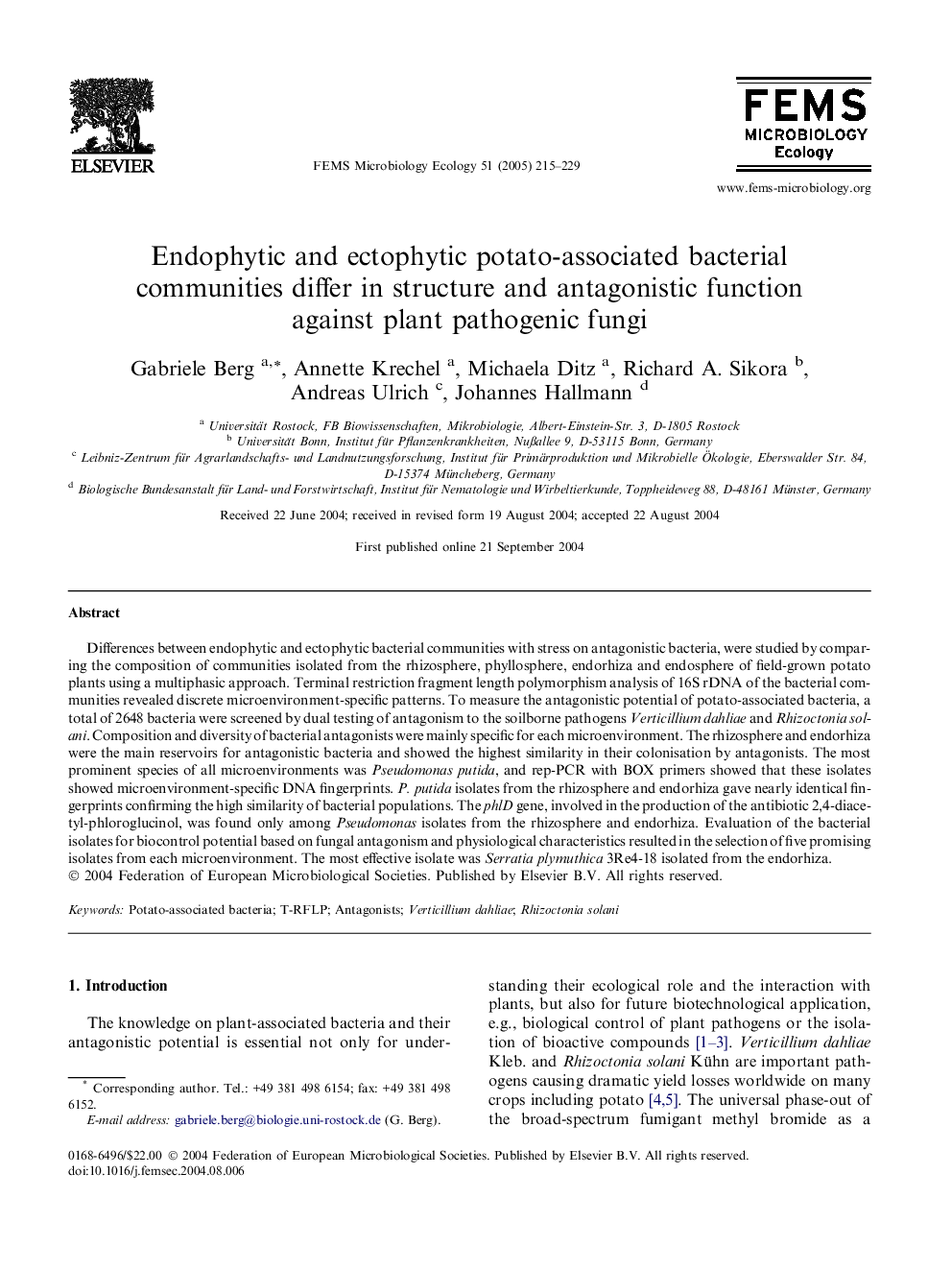| کد مقاله | کد نشریه | سال انتشار | مقاله انگلیسی | نسخه تمام متن |
|---|---|---|---|---|
| 9437769 | 1299854 | 2005 | 15 صفحه PDF | دانلود رایگان |
عنوان انگلیسی مقاله ISI
Endophytic and ectophytic potato-associated bacterial communities differ in structure and antagonistic function against plant pathogenic fungi
دانلود مقاله + سفارش ترجمه
دانلود مقاله ISI انگلیسی
رایگان برای ایرانیان
موضوعات مرتبط
علوم زیستی و بیوفناوری
علوم محیط زیست
بوم شناسی
پیش نمایش صفحه اول مقاله

چکیده انگلیسی
Differences between endophytic and ectophytic bacterial communities with stress on antagonistic bacteria, were studied by comparing the composition of communities isolated from the rhizosphere, phyllosphere, endorhiza and endosphere of field-grown potato plants using a multiphasic approach. Terminal restriction fragment length polymorphism analysis of 16S rDNA of the bacterial communities revealed discrete microenvironment-specific patterns. To measure the antagonistic potential of potato-associated bacteria, a total of 2648 bacteria were screened by dual testing of antagonism to the soilborne pathogens Verticillium dahliae and Rhizoctonia solani. Composition and diversity of bacterial antagonists were mainly specific for each microenvironment. The rhizosphere and endorhiza were the main reservoirs for antagonistic bacteria and showed the highest similarity in their colonisation by antagonists. The most prominent species of all microenvironments was Pseudomonas putida, and rep-PCR with BOX primers showed that these isolates showed microenvironment-specific DNA fingerprints. P. putida isolates from the rhizosphere and endorhiza gave nearly identical fingerprints confirming the high similarity of bacterial populations. The phlD gene, involved in the production of the antibiotic 2,4-diacetyl-phloroglucinol, was found only among Pseudomonas isolates from the rhizosphere and endorhiza. Evaluation of the bacterial isolates for biocontrol potential based on fungal antagonism and physiological characteristics resulted in the selection of five promising isolates from each microenvironment. The most effective isolate was Serratia plymuthica 3Re4-18 isolated from the endorhiza.
ناشر
Database: Elsevier - ScienceDirect (ساینس دایرکت)
Journal: FEMS Microbiology Ecology - Volume 51, Issue 2, 1 January 2005, Pages 215-229
Journal: FEMS Microbiology Ecology - Volume 51, Issue 2, 1 January 2005, Pages 215-229
نویسندگان
Gabriele Berg, Annette Krechel, Michaela Ditz, Richard A. Sikora, Andreas Ulrich, Johannes Hallmann,